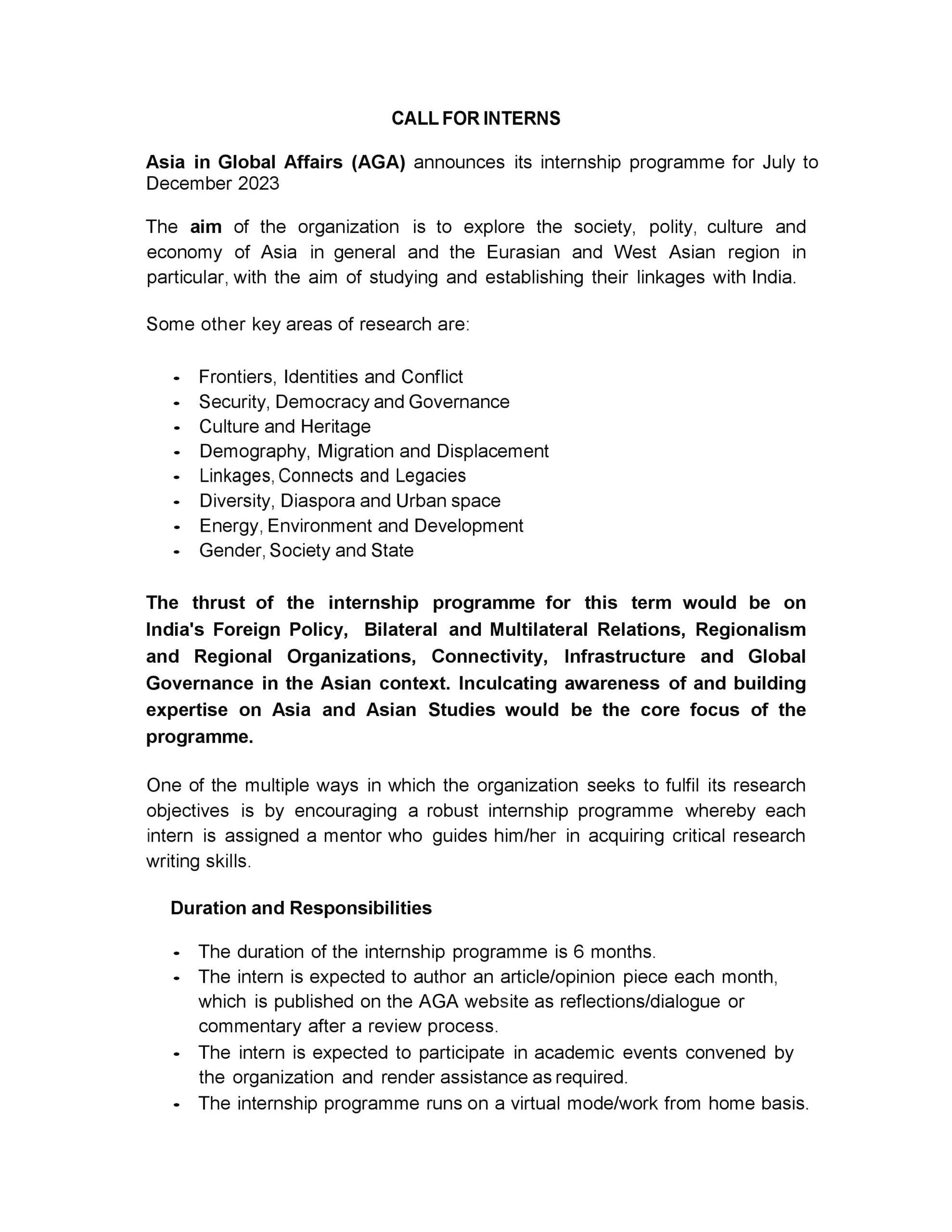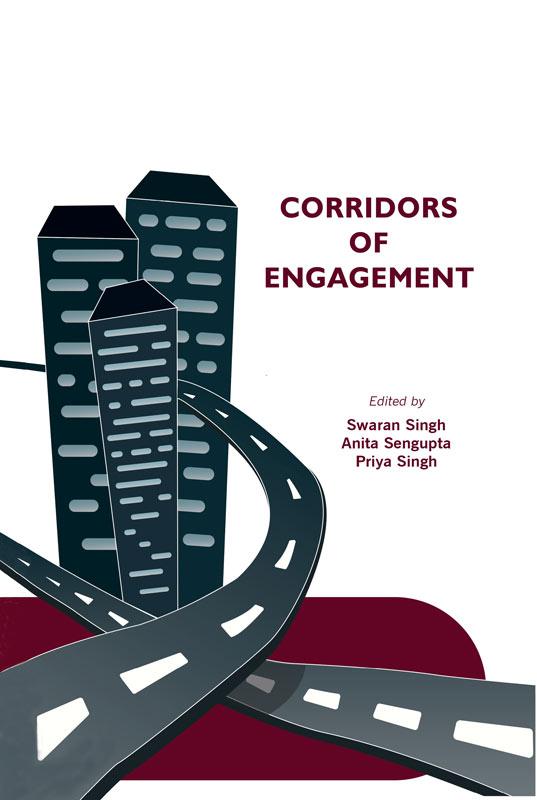A book discussion on the Royal Roads of the City of Joy- Calcutta, based on “Kolkata Rajpath: Socio-Cultural Dimensions” was held at the Rabindranath Tagore Centre, ICCR on April 26, 2019. The event was organised by Asia in Global Affairs in collaboration with the Rabindranath Tagore Centre, ICCR. The session was chaired by Professor Purabi Ray, author and historian. Dr Somdatta Chakraborty, Senior Adjunct Researcher at AGA and Faculty at the Sanskrit College and University and Dr Shrimoyee Guha Thakurta, Faculty at the Scottish Church College, the co-editors of the book reflected upon their work. The Regional Director of RTC, ICCR, Shri Goutam De and Dr Anita Sengupta, Director, AGA offered introductory remarks.
The book elucidates why Calcutta enjoys a unique position in comparison to other cities. Since the renaissance period, Calcutta emerged as a city of freedom fighters, artists, historians and literati who have contributed immensely in enhancing the cultural canvas of the city. The book follows a chronological pattern based on the map of the city, providing an interesting insight into the physical space of the city. Excerpts were read out from the book, starting with the Chitpur road, the oldest according to available records, moving down to Baghbazaar, eventually to College Street, Boubazaar Street, Lalbazaar Street, including many other aspects which were not mentioned in the book, enabling the readers to visualize the urban space of the city. It also highlighted the progressive development of the streets through the years.
Dr Shrimoyee Guha Thakurta began by stating that the origins of the city stands contested, it has been traced to colonial beginnings in 1690 as well as beyond the colonial hankerings. The book describes the existence of the city in the pre-colonial era. Initially, Job Charnok found three villages that proved to be the heart of the city, and it was the Zamindari of these three villages that was acquired by the British in 1698, which technically provides the city with its first territorial bearings. Thus, the complex of these three villages was very significant to the history of Kolkata where the Chitpur road seems to have played an important role. The history of the city could further be traced back to the Mughal period in the 14th or 15th century, where these settlements were rather obscure, mostly belonging to forested areas, marked by sparse settlements of fisherman, hunters and woodcutters. However, the 16th century resulted in definite changes experienced by these settlements. These have been attributed to the presence of foreign traders from 15th century. The coming of the Portuguese and the Dutch along the Hooghly River ushered various trading opportunities.
The Portuguese initially settled down at Saptagram, an ancient village and then moved towards Hughli/Hooghly. Seeing this, many natives/traders shifted from Saptagram down to the village/settlements at Hughli/Hooghly. Moreover, it was at this juncture, that is, before the arrival of the English, three local villages, Sutanati, Kalikata, and Gobindapore, which were later to become parts of Calcutta were chosen as places to settle by Indian traders who had migrated from the silted-up port of Saptagram/Satgaon, farther upstream. The first families who settled here were the Sheikhs and the Basaks, but it has been contested that the first settlers were the Rai Chowdhuries. When Job Charnok first arrived in Kolkata, and the first office set up by Charnok was in the only brick building that was located in the present Dalhousie Square which belonged to the Rai Chowdhuries themselves. According to the records, the Sheikhs and Basaks cleared off the jungles of the Gobindopur village and established palaces and a weaver’s village. Besides, they established a temporary market where they traded cotton at the Cotton Street. Settlements could be traced to where the ancestors of other families also began to settle down. The ancestors of the Tagore family, Mitros of Kumartoli and Mitros of Shutta Hati could be traced in and around the village of Gobindopur. Thus, this history provides information of the period prior to the arrival of Job Charnok himself.
The story further moves on to the chapter on Baghbazaar, another very ancient location as far as the city is concerned. The settlements were the earliest signs of human forms coming up from the 16th century into the 18th century. As soon as Job Charnok arrives in 1690, the three villages are intricately connected to the English settlers and their company. When the fear of the Maratha invaders coming into the city loomed large in 1742, elite Hindu families who had a lot of money at their disposal decided to protect themselves with permission from the Company to dig up a ditch which would circle the city and protect themselves from the imminent threats. This ditch was never completed as the threat fizzled out. It was evident that the political fortunes of the Company was connected with the story and growth of the settlement itself. This was followed by a vivid description of Boubazaar Street. When Robert Clive was sent from Madras to retake Calcutta, Siraj ud-Daulah was defeated in the Battle of Plassey, and the fortune of Bengal with that of the subcontinent turned around from this point of history. As the Company rose to a political pedestal, Calcutta, or rather the three villages began to take the shape of the first capital city of British India. It also began to adopt some of the typical characteristics of a typical city, where the city gets racially segregated in what comes to be identified as a Black Town constituting the native settlers and the White Town, referring to the European settlers in the particular urban states. In 1696, Job Charnok, the first English man to settle in Bengal established and fortified the old Fort William, which was located near Burrabazaar.
The main reason why old Fort William was established was less to do with security, but more to do with easy access to provisions that could be acquired from Burrabazaar. As the Sheikhs and the Basaks began to expand as wealthy families, they started increasing their settlements around the growth of several bazaars. It included bazaars like Burrabazaar, Lalbazaaar, Radhabazaar, Shyambazaar and Shobhabazaar. After the Battle of Plassey, the British realised that the old Fort Williams was not well protected and thought about changing its location to further South in the Gobindopur village. The natives of the village were given alternative land to reside upon and were compensated for their loss. Thus, there was a clear profile of the city painted out by the end of the 18th century itself, where the northern part of the city, roughly from Baghbazaar right up to Burrabazaar came to be identified as the Black Town. From Burrabazaar to Boubazaar was identified as an economic centre for this particular settlement which came to be identified in the accounts of the English Company as the Bazaar town. From roughly Dihi Kalikata (dihi denoting high spots on the riverside) to the space that comprised the newly established Fort William came to be identified as Town Calcutta where the Europeans settled down. Further south into the village of Gobindopur was identified as Southern Calcutta, which was not a part of the main frame of the city then.
The socio-cultural aspects grew from the various class and castes that made up old Calcutta. This caste profiling owes its origin to the palki bearers which eventually gave rise to the concept of motor cycles and trams in contemporary Calcutta. The holistic caste structure existing in those days was challenged as the city did not belong to anybody, but at the same time, it belonged to everybody. This has been the unique selling point of Calcutta. The multiculturalism of Calcutta lies primarily in the contribution of the Portuguese who took certain Bengali sample books to Lisbon to publish Portugal’s first published Bengali book in 1852. The Portuguese were investing in several revolutionary agricultural practices like the plantation of potato which started in Calcutta and gradually spread to the other parts of Bengal. Brabourne road, where the Portuguese Church is located, is a melting pot which signifies the multicultural portfolio of Calcutta. In the period of 1758-64, Calcutta could be called a peri-urban space where the characteristics of the urban and rural people merged.
Dr Somdatta Chakraborty discussed about various renowned personalities and touched upon the accommodating and diverse aspects of the city and its personalities. She observed that there is parity in the author’s book from where he began and where he concluded. On reading this book, it strikes us that the city was the city of firsts- the first things that took place in old Calcutta, like the first Agricultural Research Laboratory was set up in Calcutta in Baghbazaar, established by Dr. Basishwar Sen, who was a scientist and one of the prominent students of the legendary scientist Jagadish Chandra Bose, was also a close associate of Swami Vivekananda. His research showed that there is no duality in science and religion per se. He was a disciple of Ma Sharada. The binocular, which was an accidental discovery in Calcutta, was found by Narendranath Dhar. Calcutta brought to life the creativities of the people. The formation of Calcutta and partition are intrinsically interlinked which had a lasting effect on innovations and the entrepreneurial zeal of Calcuttans. Hemendranath Tagore’s daughter- Pragyasundari Devi was the first author of a cook book in Bengal as well as a magazine editor, to publish about a thousand recipes. Her famous writings reflected through ‘Amish o Niramish Ahar’ was a significant cook book in the Bengali language. She wrote a book on hygiene and made it a point to circulate it to schools and colleges. The Swadeshi aspect and the feeling of patriotism among all the Calcuttans were touched upon. The formation of the Federal Hall was to give an impetus to the Swadeshi Movement and at its opening; Rabindranath Tagore specifically invited Sikh Punjabis. He believed that Bengal and Punjab shared a similarity and should stand in solidarity. It was a prophetic statement made in 1906, but little did they know the result of the Partition. The youth from various colleges had gathered and they were particularly stirred by a statement which said, “If you don’t protect the soul of Calcutta now, we will lose the soul of India.” Men came forward to contribute to the cause of Bengal and Punjab. The history of institution building is well-reflected from Presidency College, also called the Hindu College. The first problem it faced was that they needed a building of its own. Principal Sutcliff had to fight for the Presidency College in the face of only Brahmins being made Principals. The rows of book stalls lined at College Street are primarily Urdu- speaking Muslims from North India.
Professor Purabi Roy, termed it as a brilliant deliberation on a rather humongous book based on the history of Calcutta. She did refer to some of the missing threads of information both in the spatial sense as well as contributions of communities such as the Armenians. She brought the deliberations to a conclusion with the observation that the transfer of capital from Calcutta to Delhi and the two World Wars greatly affected the life of Calcutta. However, Calcutta still retains its culture and tradition, the roots of which can be traced to these very roads of Calcutta.
The vote of thanks was offered by Megha Singh, Intern Coordinator, AGA.
(Report prepared by Mahima Maniar, Intern, AGA)



